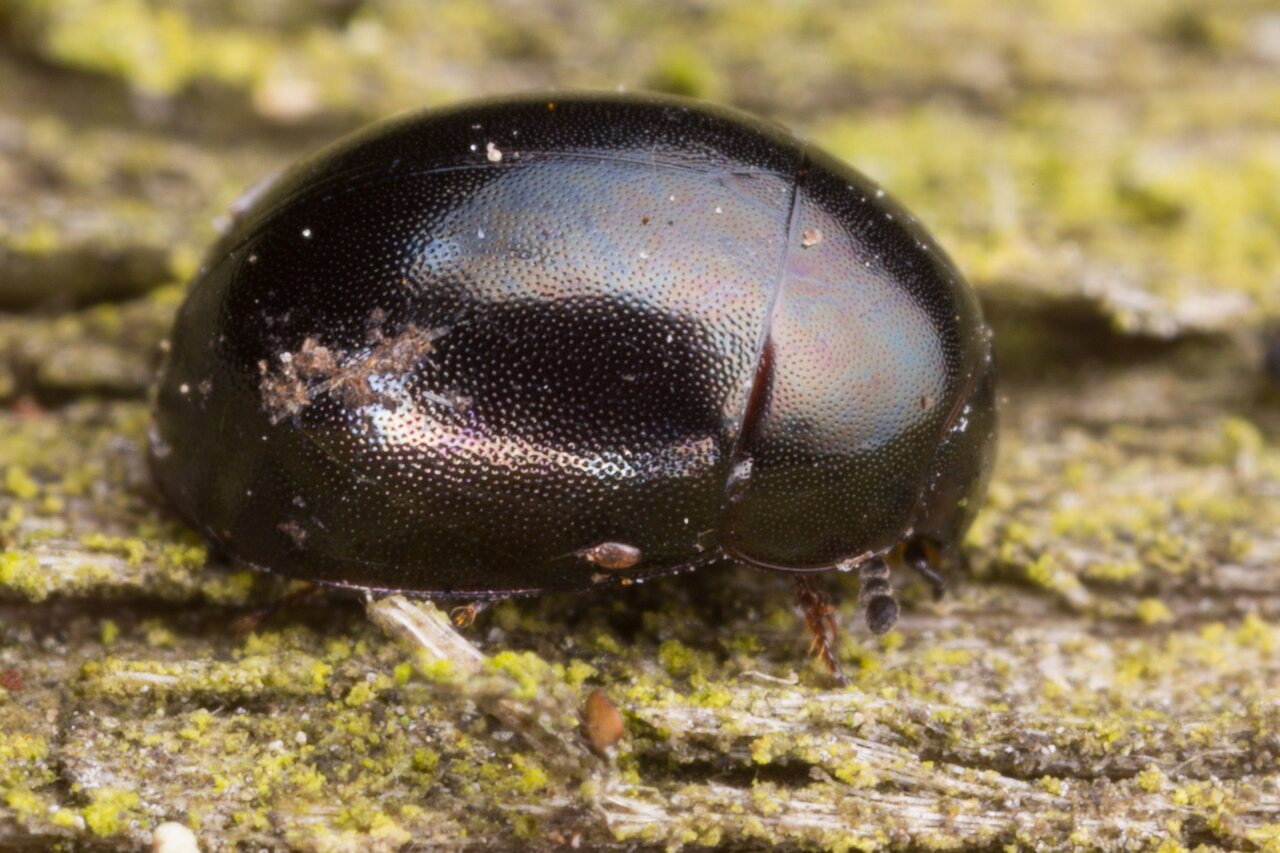
Anisotoma castanea · kerpvabalis
Panašus į Anisotoma orbicularis, bet pastarojo antsparniuose yra duobelių išilginėmis eilutėmis.
This species is widespread but generally very local and scarce across central Europe from the Pyrenees to Northern Italy, Hungary, Germany and Poland, and it has recently been recorded from Greece, it is often restricted to mountain areas up to 2000 m and to damp woodland in upland river valleys in particular. It occurs sporadically in the southern Baltic countries but is locally common across much of Fennoscandia where it extends far beyond the Arctic Circle, beyond this the eastern extent of the distribution extends across Northern Russia; the nominate subspecies is present throughout the Western and Central Palaearctic region while ssp. niponensis Hisamatsu, 1985 occurs in the far east of Russia, Korea and Japan. The typical habitat is extensive woodland with plenty of older trees in various states of decay and lots of fallen timber where adults are associated with slime moulds and various fungi. Adults are active from May until September although specimens occasionally occur earlier or later, peaking in abundance during August. Breeding occurs during spring and early summer and while the larvae develop in moulds it is unknown whether they also develop in the fungi that adults are often associated with. It is likely that adults, as is typical of the genus, overwinter among decaying fungi, under bark or among leaf litter close to suitable host material. Adults are nocturnal and often wander on the surface of trunks and fallen timber; they also fly.
3.0-4.2 mm. Broadly elongate-oval, convex and continuous in outline, body shiny black with the mouthparts, a spot on the vertex and the pronotal margins pale, ventral surface pale yellowish-brown, legs pale, antennae pale with segments 7, 9 and 10 and the base of the terminal segment black. Head transverse with large convex eyes and converging temples, vertex and clypeus finely and moderately densely punctured, labrum sparsely punctured. Antennae inserted laterally in front of the eyes, segment2 distinctly shorter than segment 3, 4 - 6 small and transverse, and 7-11 form a loose club; the eighth notably diminutive. Pronotum widely transverse, broadest across finely rounded and slightly obtuse posterior angles and narrowed to a curved apical margin, basal margin weakly and evenly curved, surface evenly convex and very finely punctured throughout. Scutellum triangular, equilateral, acutely pointed and punctured as the surrounding elytral cuticle. Elytra broadest across rounded shoulders and evenly narrowed to a continuously rounded apex, surface evenly convex with the sutural stria deep in the apical third and reaching into the basal third, moderately densely and randomly punctured throughout although tending to form partial longitudinal rows in places. Legs short and slender, the femora not visible in normal setting and the tibia hardly broadened from the base. Tarsi 5-5-4 in males, 4-segmented in females.